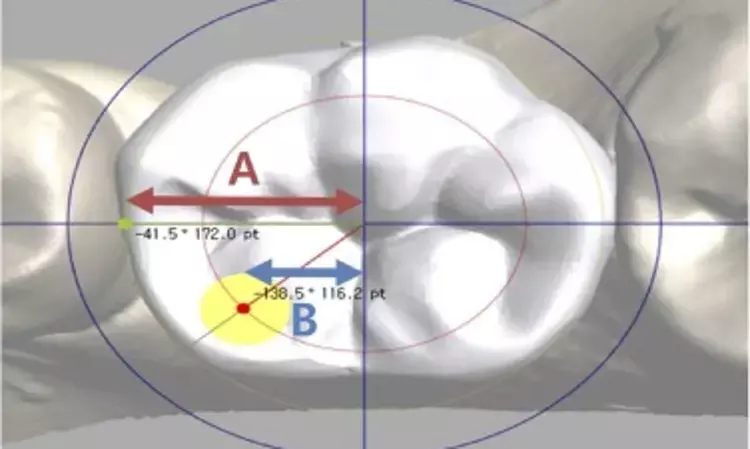- Home
- Medical news & Guidelines
- Anesthesiology
- Cardiology and CTVS
- Critical Care
- Dentistry
- Dermatology
- Diabetes and Endocrinology
- ENT
- Gastroenterology
- Medicine
- Nephrology
- Neurology
- Obstretics-Gynaecology
- Oncology
- Ophthalmology
- Orthopaedics
- Pediatrics-Neonatology
- Psychiatry
- Pulmonology
- Radiology
- Surgery
- Urology
- Laboratory Medicine
- Diet
- Nursing
- Paramedical
- Physiotherapy
- Health news
- Fact Check
- Bone Health Fact Check
- Brain Health Fact Check
- Cancer Related Fact Check
- Child Care Fact Check
- Dental and oral health fact check
- Diabetes and metabolic health fact check
- Diet and Nutrition Fact Check
- Eye and ENT Care Fact Check
- Fitness fact check
- Gut health fact check
- Heart health fact check
- Kidney health fact check
- Medical education fact check
- Men's health fact check
- Respiratory fact check
- Skin and hair care fact check
- Vaccine and Immunization fact check
- Women's health fact check
- AYUSH
- State News
- Andaman and Nicobar Islands
- Andhra Pradesh
- Arunachal Pradesh
- Assam
- Bihar
- Chandigarh
- Chattisgarh
- Dadra and Nagar Haveli
- Daman and Diu
- Delhi
- Goa
- Gujarat
- Haryana
- Himachal Pradesh
- Jammu & Kashmir
- Jharkhand
- Karnataka
- Kerala
- Ladakh
- Lakshadweep
- Madhya Pradesh
- Maharashtra
- Manipur
- Meghalaya
- Mizoram
- Nagaland
- Odisha
- Puducherry
- Punjab
- Rajasthan
- Sikkim
- Tamil Nadu
- Telangana
- Tripura
- Uttar Pradesh
- Uttrakhand
- West Bengal
- Medical Education
- Industry
Which risk factors are linked to loosening of implant prostheses in CAD-CAM custom abutments?

The degree of attrition, buccolingual angulation of the implant and abutment, type of unit, and experience of the prosthodontist (>3 years or <3 years) were risk factors in the incidence of screw loosening suggests a new study published in the Journal of Prosthetic Dentistry.
Custom abutments made by using computer-aided design and computer-aided manufacturing (CAD-CAM) are often used for implant-supported prostheses. However, studies on screw loosening of implant prostheses using custom abutments are lacking.
The purpose of this retrospective study was to investigate the risk factors of screw loosening in implant-supported prostheses using custom abutments made with CAD-CAM.
Clinical charts, radiographic images, and CAD custom abutment design file data were collected and analyzed retrospectively. The study included 255 patients with 401 dental implants, and the follow-up duration was 6 years. Age, sex (male/female), type of unit (single-unit or multiunit), location of the implant (maxilla or mandible and anterior, premolar, or molar tooth), type of antagonist, and experience of the prosthodontist were reviewed, and implant angulation (mesiodistal and buccolingual), location of the screw access hole (mesiodistal and buccolingual distances from center), and attrition status (none, localized, or generalized) were measured by using a CAD file. The frequencies and percentages of risk factors were evaluated with the Fisher exact test, and the Bonferroni correction was used as a post hoc test. Multiple logistic regression with the Firth method was performed to calculate the odds ratios and their confidence intervals (α=.05).
Results
Screw loosening showed a correlation with the severity of attrition (P<.001). Single-unit prostheses had a higher risk of screw loosening than multiunit prostheses (P<.001). Experience of the prosthodontist (P<.001). Buccolingual angulation of the implant and abutment significantly influenced the incidence of screw loosening (P<.05). Age, sex, location of the implant, type of antagonist, mesiodistal implant angulation, and buccolingual and mesiodistal location of the screw access hole did not significantly influence the incidence of screw loosening (P>.05).
The degree of attrition, buccolingual angulation of the implant and abutment, type of unit, and experience of the prosthodontist (>3 years or <3 years) were risk factors in the incidence of screw loosening.
Reference:
Risk factors associated with screw loosening in CAD-CAM custom abutments: A 6-year retrospective study. Changmin Ju,Younghoo Lee, Seoung-Jin Hong, Youngkyun Choi, Eunhan Cho, Janghyun Paek. Published:July 26, 2023DOI:https://doi.org/10.1016/j.prosdent.2023.05.025
Keywords:
Changmin Ju,Younghoo Lee, Seoung-Jin Hong, Youngkyun Choi, Eunhan Cho, Janghyun Paek, Risk factors, associated, screw, loosening, CAD-CAM, custom, abutments, 6-year, retrospective study, Journal of Prosthetic Dentistry
Dr. Shravani Dali has completed her BDS from Pravara institute of medical sciences, loni. Following which she extensively worked in the healthcare sector for 2+ years. She has been actively involved in writing blogs in field of health and wellness. Currently she is pursuing her Masters of public health-health administration from Tata institute of social sciences. She can be contacted at editorial@medicaldialogues.in.
Dr Kamal Kant Kohli-MBBS, DTCD- a chest specialist with more than 30 years of practice and a flair for writing clinical articles, Dr Kamal Kant Kohli joined Medical Dialogues as a Chief Editor of Medical News. Besides writing articles, as an editor, he proofreads and verifies all the medical content published on Medical Dialogues including those coming from journals, studies,medical conferences,guidelines etc. Email: drkohli@medicaldialogues.in. Contact no. 011-43720751


